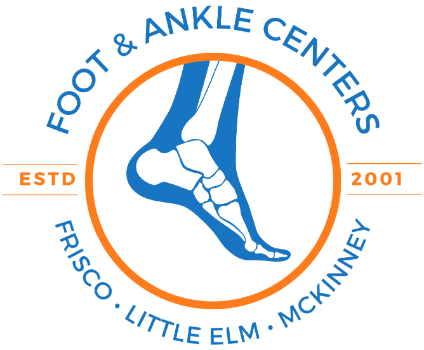Eczema vs. Athlete’s Foot | Foot & Ankle Centers
Wednesday, July 09, 2025 | By: Foot & Ankle Centers of Frisco and Plano
Did you know nearly 70% of people will deal with a skin condition at some point in their lives? When it comes to foot health, identifying the type of rash—whether it’s eczema, athlete’s foot, or something else—is the first step toward proper treatment. It might be tempting to ignore a red, itchy patch, but understanding what you're dealing with is key to finding relief. Trusted foot and ankle specialists like Dr. Knapp, Dr. Tavakoli, and Dr. Treleven at Foot & Ankle Centers located in Frisco, Little Elm, or McKinney, Texas are here to help you get answers and feel better, faster.
Understanding Foot Rashes
Foot rashes can manifest in various forms and may be caused by different factors such as allergies, infections, or environmental triggers. Common types include eczema and athlete’s foot, but many others can affect your feet.
What is Eczema?
Eczema, also known as dermatitis, is a chronic skin condition that leads to dry, inflamed, and itchy skin. In the case of foot eczema, individuals might experience the following symptoms:
- Dryness and Cracking: Skin may appear flaky and rough, leading to cracks that can be painful.
- Red Patches: Inflammation can cause the skin to be red and swollen.
- Blisters: In more severe cases, blisters may form and ooze fluid, leading to discomfort.
Causes of Eczema
Several factors may trigger eczema, including:
- Allergens: Dust mites, pet dander, and pollen can cause flare-ups.
- Irritants: Certain soaps, detergents, and fabrics can irritate the skin.
- Climate: Changes in temperature and humidity levels can exacerbate symptoms.
What is Athlete’s Foot?
Athlete’s foot is a contagious fungal infection that primarily affects the skin between the toes and on the soles of the feet. Symptoms usually include:
- Peeling and Scaling: The skin may start peeling, leading to cracked and flaky areas.
- Itching and Burning: A strong urge to scratch the affected areas is common.
- Odor: A musty smell can arise as the condition worsens.
Causes of Athlete’s Foot
Our doctors at Foot & Ankle Centers believe understanding the causes of athlete’s foot can help you prevent it:
- Fungal Infections: The leading cause is a fungus called Trichophyton, found in warm, damp areas.
- Moist Environments: Wearing damp socks or shoes can create an environment conducive to fungal growth.
- Shared Spaces: Walking barefoot in communal showers or around locker rooms increases the risk of infection.
Differentiating Between Eczema and Athlete’s Foot
To effectively treat foot rashes, recognize key differences:
- Appearance of the Rash: Eczema generally causes dry, red, inflamed patches, while athlete's foot appears as peeling skin or blisters.
- Location: Eczema can occur anywhere on the foot, while athlete’s foot typically affects between the toes or the soles.
- Odor: Athlete’s foot often emits a noticeable odor due to the fungus, whereas eczema does not.
Diagnosis and Treatment Options
Identifying the correct condition is crucial for treatment:
Medical Evaluation: Consult with a healthcare provider for accurate diagnosis and appropriate remedies. At Foot & Ankle Centers, professional assessments can guide you to the correct treatment began with a thorough examination.
Eczema Treatment:
- Moisturizers: Keep skin hydrated to reduce dryness.
- Corticosteroids: Topical solutions or ointments can reduce inflammation.
- Antihistamines: Can help alleviate itching and discomfort.
Athlete’s Foot Treatment:
- Antifungal Creams: Over-the-counter treatments are often effective.
- Proper Hygiene: Keeping feet dry and changing socks regularly helps control fungi.
- Avoiding Shared Spaces: Wear flip-flops in public showers or swimming pools to reduce exposure.
Home Remedies and Preventative Measures
In addition to prescribed treatments, several home remedies can help alleviate symptoms:
- Oatmeal Baths: These can soothe itching and inflammation for both conditions.
- Tea Tree Oil: Known for its antifungal and anti-inflammatory properties, it may help treat athlete’s foot.
- Cold Compresses: Applying a cool cloth can ease discomfort associated with both rashes.
Lifestyle Changes to Promote Healthy Feet
Preventing foot rashes starts with daily practices:
- Wear Breathable Footwear: Choose shoes made from natural materials that allow airflow.
- Keep Feet Clean and Dry: Regularly wash and thoroughly dry your feet, especially between the toes.
- Hydration: Drink plenty of water and moisturize your feet regularly to avoid dryness.
When to Seek Professional Help
While many foot rashes can be treated at home, seek professional medical advice when:
- The rash persists or worsens despite home treatments.
- You notice signs of infection, such as increased redness, swelling, or oozing.
- You develop a high fever or experience severe pain.
What You Can Do Now
Being knowledgeable about the foot conditions affecting many individuals can lead to better care. By distinguishing between eczema, athlete’s foot, and other foot rashes, you can pursue the right care path. If you suspect you are facing a serious issue that requires professional evaluation, schedule an appointment with a podiatrist.
Where Do We Go from Here?
Recognizing symptoms early and getting the right treatment is essential for maintaining healthy feet and an active lifestyle. At Foot & Ankle Centers, expert care is available close to home—Dr. Knapp, Dr. Tavakoli, and Dr. Treleven serve patients across Frisco, Little Elm, and McKinney, making it easier than ever to get the care you need, when and where you need it.


Leave a comment
0 Comments